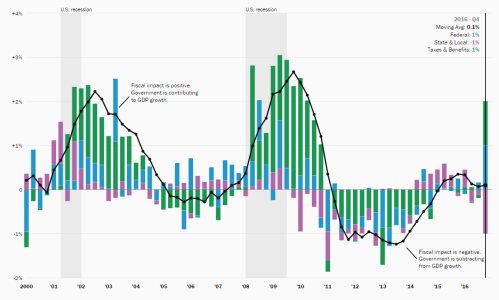States are cutting their budgets like mad in an effort to close deficits that often pass the billion dollar mark. Yesterday’s Wall Street Journal provides a grim catalog of state spending cuts: Most states have either hiked fees or chopped services for the disabled and the elderly. In New Jersey, budget cutting poster boy Chris Christie has held back $1.26 billion for schools and local governments, and Indiana and Minnesota have followed suit.
But indiscriminate cuts are as foolish as profligate spending. David Leonhardt’s column cuts to the chase, “A good deficit plan doesn’t simply make across-the-board cuts for years on end. It cuts funding for programs that do not spur economic growth and increases funding for those relatively few that do. Likewise, it raises tax rates that do not have a clear record of promoting growth and cuts those that do.” Leonhardt is talking about the federal government, which has the luxury of deficit spending while states don’t. But still, as Michigan’s governor-elect Rick Snyder has said, across the board cuts represent “a management failure because that means you don’t know your job well enough to say, ‘This is more important than that.’”
In the current economic climate, governors and legislators have to articulate a vision of the future of their states that will guide their spending and their budget cutting decisions. That future should be driven by exports (to take advantage of rising global demand) powered by low carbon (to lead the clean energy revolution), fueled by innovation (to spur growth through ideas and deployment) and rich with opportunity (to reverse the troubling, decades long, rise in income inequality).
New governors who are getting ready to take office should start now to talk about a three-pronged strategy for state spending and, yes, cuts. First, states should invest in new ways to support the assets that drive the next economy. The next economy will be created through public and private interventions around the assets that matter: innovation, human capital, infrastructure, and quality of place. Making these investments requires significant policy reforms because current policies are out of sync with both the changing structure and metropolitan geography of the economy. Thus, states will likely need a new network of market-oriented, private-sector-leveraging, performance-driven institutions. These investments and institutions do not necessarily require new public resources, but they do demand that existing dollars be spent in a more targeted metro-aware fashion.
Specifically, governors can create jobs councils and jobs cabinets, or state infrastructure banks to spend state transportation dollars on smarter projects.
Second, they need to cut to invest to jumpstart the transition to the next economy. This includes shifting money out of legacy programs that lack accountability, do not focus on metros, or are not oriented to the next economy, and using it to support the assets that matter, such as education, innovation, and infrastructure. One place to cut: wasteful tax breaks and other giveaways for business recruitment. While governors fall all over themselves to poach businesses from other states, more than 95 percent of annual state job gains comes from the expansion of existing businesses (nearly 42 percent) and the birth of new establishments (roughly 56 percent). Governors may also need to turn to voters for new dedicated taxes or other new sources of state revenue, validated by voter referendums.
Finally, they must leverage their investments through metropolitan strategies. The benefits of state investments are amplified when they are aligned with the specific advantages of particular metropolitan areas, whether that is a group of interconnected firms in a particular economic sector, or strength in fast-growing service exports, or globally powerful research institutions or community colleges that develop customized job training. States can provide rich, comparable data sets to help metropolitan areas quickly understand market strengths. They can provide small investments in regional capacity, such as cluster grants. Perhaps most critically, states can break agency silos that no longer match economic or geographic imperatives and create cross-agency teams that focus on delivering what regions say they need to succeed. None of these efforts are especially expensive: Most of them aim to use existing resources in a more targeted and efficient way.
It sounds tough and responsive to advocate for more and more aggressive budget cuts, particularly if your audience is tea-steeped. But in fact what’s really smart, and really hard, is knowing what to cut and what to spend more on, so that a state can emerge from its fiscal crisis stronger, not just starved.



Commentary
Burying the (State Budget) Hatchet
November 18, 2010